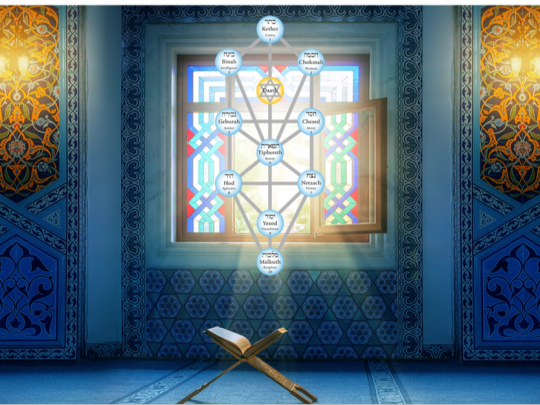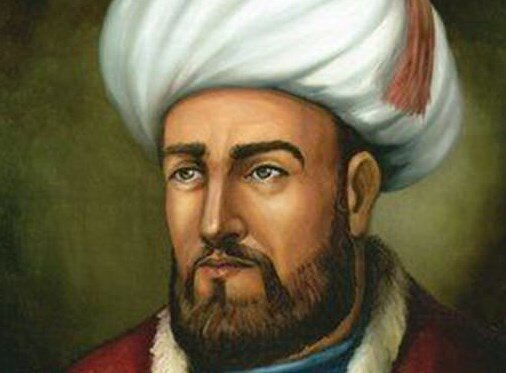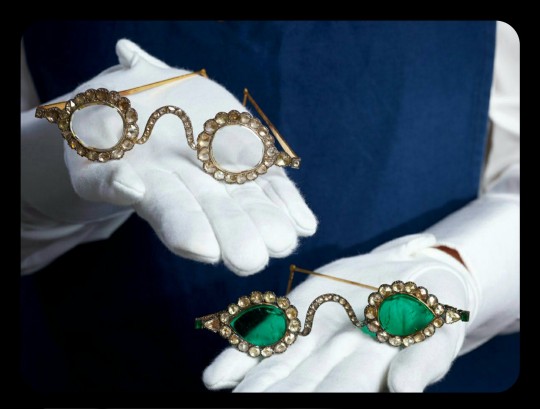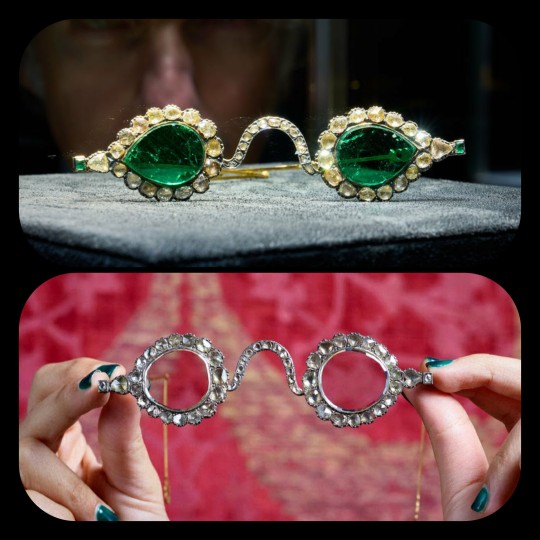#islamic mysticism
Text
"Attar is one of the greatest poets of the Persian language. Nonetheless, his popularity - both in Iran itself and in the West (Goethe, for example, touched on him only briefly in his West-Eastern Divan) - does not match that of Ferdowsi (d. 1020), Omar Khayyam (d. c.1132), Rumi, Saadi (d. 1292) or Hafiz (d. 1389); occasionally he is even omitted from the line of seven Persian poet-princes in favour of Jami (d. 1492). One possible reason for this is that the composition of his poetry is too artful, too complex to be effective in the town squares and teahouses, while at the same time, many of his stories and figures may seem too coarse, too folk-like and too sarcastic to be at the forefront of the high spiritual literature cultivated at courts in former times and in middle-class households today. Attar’s poetry, on the other hand, is far less stilted than that of most Persian poets but, rather, unadorned, clear and immediate. The pain it expresses is not spiritually filtered as in Rumi, far less metaphysically elevated than in Saadi, and not sublimated into pleasure as in Omar Khayyam - where Hafiz turns the earthly into the mystical, Attar strips mysticism down to its leaden, earthly foundation in order to scream his longing to the heavens."
--Navid Kermani, The Terror of God: Attar, Job and the Metaphysical Revolt
.
I asked my professor which masnavi (Persian epic poem) he thinks is the greatest ever written. He replied, Rumi's Masnavi (the only masnavi Rumi wrote). Shock. How can there be a masnavi greater than Attar's Conference of the Birds? (There are 4 authentic Attar masnavis; sadly, as far as I know, Conference of the Birds is the only one that has been translated into English.) Reading through Rumi's masnavi I think I am still team Attar. It's Attar's coarseness I love--he is a poet of mad saints and freaks. In Rumi's Masnavi, the absence of a frame story and the pious/didactic tone is somewhat of a barrier for me. The pieces don't quite hang together, whereas Attar's Conference of the Birds is intricately structured--there are stories within stories within stories, each bird with its idiosyncratic psychology--a narrative arc that mirrors the journey of the soul across the seven valleys. But maybe there is a difference between reading a sufi text for its poetry rather than religious instruction, I don't know.
#attar#Rumi#persian poetry#poetry#literature#masnavi#Navid Kermani#islam#islamic mysticism#islamic literature#mysticism#sufism#sufi literature
185 notes
·
View notes
Text

"If instead of studying religion, men would have devoted to develop mathematics - algebra.
If logic of science would have occupied the place of Sufism, faith and superstition.
Religion that divides human beings would have replaced by humanism…"
-- Omar Khayyam (1048 - 1131)
#Omar Khayyam#religion#sufism#islam#islamic mysticism#science vs religion#science#religion vs science#religion is a mental illness
41 notes
·
View notes
Text

105 notes
·
View notes
Text
Considering the above, the Pearl within Islam can also be thought of as synonymous with the Logos. While in the Christian tradition, the metaphor of the Pearl as the Logos is communicated through its likeness to Jesus Christ, here it becomes apparent in the metaphysical notions of the Pearl as the Word of God or the Divine Intellect. This distinction mirrors the two religions’ diverging views on where Divine quintessence lies in its most unadulterated form: in Christianity, it is in Christ; and in Islam, it is in God’s Word immaculately transmitted in the Holy Qur’an. Despite this difference, both traditions revolve around primary vessels of Divinity akin to the Platonic Logos. In both systems, the Pearl is thought to represent that Logos, being the imprint of God in the physical world and thus sharing an ontological status (though, of course, to a subtler degree) with Jesus Christ and the Qur’an.
The Gnostic Pearl in Syriac Christianity, Islam and Beyond by Esmé L. K. Partridge, pp. 9-10.
10 notes
·
View notes
Text

4 notes
·
View notes
Text

The Nature of Being
This lecture was given during a gnostic meditation retreat from the tradition of Samael Aun Weor. By uniting serenity and insight within various spiritual exercises, meditators directly perceive their own true nature. Such a process is beautifully encoded within the first and most recited surah of the Qur’an (Al-Fatihah: The Opening), which synthesizes the entire Tree of Life. By meditating on this map in relation to these famous verses, initiates can access divine reality within themselves, here and now.
#gnosis#gnosticism#gnostics#gnostic teachings#gnostic prayer#gnostic kabbalah#glorian publishing#samael aun weor#chicago gnosis podcast#chicago gnosis#gnostic academy of chicago#islamic mysticism#Islam#islamic#sufism#sufi#quran#holy quran#spirituality#consciousness#spiritual#meditation#how to meditate#religion#gnostic#awakening#esoteric#mysticism#sufi literature#kabbalah
12 notes
·
View notes
Text
Reflections from Al-Ghazali
Reflections from Al-Ghazali
Excerpts from A Treasury of Ghazali
Published by Kube Publishing and Distributed in Pakistan by Institute of Policy Studies Press
Seek Felicity
The otherworldly felicity we are concerned with is subsistence without end, pleasure without toil, happiness without sadness, richness without impoverishment, perfection without blemish and glory without humiliation. In…

View On WordPress
#Ghazali#Inspirational Quotes#Islamic Mysticism#Islamic Philosophy#Islamic Theology#Motivational Quotes#Quotes from Ghazali#Reflections from Ghazali#Sufi Islam
3 notes
·
View notes
Text
I wonder what end You have written for me
my hope is better than what I imagine it to be.
I remember my grave often,
when my resolve begins to soften.
Time pushes me gently back to You,
evidently, I am afraid to face You.
What am I gathering of this world to show You?
are my toils fruitless, or will You approve?
I wonder about the end,
when my time with You begins.
Life is a preparation for our reunion,
a journey through Times Square,
foraging ornaments,
so my soul is not bare.
I'll cover it with jewels of kindness,
precious gems of humility,
adorn it with the finest silken honesty,
and a golden crown of simplicity.
I want my soul to shine when I return to You
Your smile of approval is my purpose,
worth more than any worldy purchase.
I will sell my name,
any material gain,
for a chance to see You smile,
in the spiritual plane. ✨️
#Divine Love#islamic mysticism#sufism#asceticism#spiritualinspiration#spirituality#life#time#life and death#life is a journey back to You#omw back to You#poetry#poem#roob writes
4 notes
·
View notes
Text
Human Knowledge
Since thou readest in her what thou thyself hast there written,
And, to gladden the eye, placest her wonders in groups;--
Since o'er her boundless expanses thy cords to extend thou art able,
Thou dost think that thy mind wonderful Nature can grasp.
Thus the astronomer draws his figures over the heavens,
So that he may with more ease traverse the infinite space,
Knitting together e'en suns that by Sirius-distance are parted,
Making them join in the swan and in the horns of the bull.
But because the firmament shows him its glorious surface,
Can he the spheres' mystic dance therefore decipher aright?
#love#spiritualjourney#sufi mystic#sufimystic#personal growth#meditation#spiritualgrowth#spiritual healing#manifestation#love poem#poems on tumblr#deep poetry#stimulatethinking#islamic mysticism#anthropology
4 notes
·
View notes
Text
Emerald Spectacles from India, c. 1620-1660 CE: the lenses of these spectacles were cut from a single 300-carat emerald, and it was believed that they possessed mystical properties

These eyeglasses are also known by the name "Astaneh-e ferdaws," meaning "Gate of Paradise," based on the perception of the color green as a symbol for spiritual salvation/Paradise. This was a common belief in Mughal-era India, where the spectacles were made.

The lenses were crafted from two thin slices of the same emerald. Together, the lenses have a combined weight of about 27 carats, but given the precision, size, and shape of each lens, experts believe that the original emerald likely weighed in excess of 300 carats (more than sixty grams) before it was cleaved down in order to produce the lenses. The emerald was sourced from a mine in Muzo, Colombia, and it was then transported across the Atlantic by Spanish or Portuguese merchants.
Each lens is encircled by a series of rose-cut diamonds, which run along an ornate frame made of gold and silver. The diamond-studded frame was added in the 1890s, when the original prince-nez design was fitted with more modern frames.

The emerald eyeglasses have long been paired with a second set of spectacles, and they were almost certainly commissioned by the same patron. This second pair is known as Halqeh-e nur, or the "Halo of Light."
The Halo of Light features lenses that were made from slices of diamond. The diamond lenses were cleaved from a single stone, just like the emerald lenses, with the diamond itself being sourced from a mine in Southern India. It's estimated that the original, uncut diamond would have weighed about 200-300 carats, which would make it one of the largest uncut diamonds ever found.

These lenses are so clear and so smoothly cut that it sometimes looks like they're not even there
Both sets of spectacles date back to the mid-1600s, and it's generally believed that they were commissioned by a Mughal emperor or prince. The identity of that person is still a bit of a mystery, but it has been widely speculated that the patron was Shah Jahan -- the Mughal ruler who famously commissioned the Taj Mahal after the death of his wife, Mumtaz Mahal. Shah Jahan did rule as the Mughal emperor from about 1628 to 1658.
The emerald and diamond lenses may have been chosen for symbolic/cultural reasons, or they may have been chosen simply because they're pretty and extravagant; their meaning/purpose is unclear. Experts do believe that the eyeglasses were designed to be worn by someone, though.
It was believed that the spectacles had spiritual properties, like the ability to promote healing, ward off evil, impart wisdom, and bring the wearer closer to enlightenment. Those beliefs are often related to Indic and Islamic traditions, some of which ascribe spiritual and/or symbolic traits to emeralds and diamonds. Emeralds can be viewed as an emblem of Paradise, divine salvation, healing, cleansing, and eternal life; diamonds are similarly associated with enlightenment, wisdom, celestial light, and mysticism.

The Gate of Paradise and the Halo of Light were both kept in the collections of a wealthy Indian family until 1980, when they were sold to private collectors, before going on auction once again back in 2021. They were valued at about $2 million to $3.4 million per pair.
Sources & More Info:
Sotheby's: Mughal Spectacles
Architectural Digest of India: At Sotheby's auction, Mughal-era eyeglasses made of diamond and emerald create a stir
Only Natural Diamonds: Auspicious Sight & the Halqeh-e Nur Spectacles
The Royal Society Publishing: Cleaving the Halqeh-Ye Nur Diamonds
Gemological Institution of America: Two Antique Mughal Spectacles with Gemstone Lenses
Manuscript: From Satan's Crown to the Holy Grail: emeralds in myth, magic, and history
CNN: The $3.5 million Spectacles Said to Ward off Evil
BBC: Rare Mughal Era Spectacles to be Auctioned by Sotheby's
#history#archaeology#artifact#mughal#india#17th century#art#emerald#diamond#glasses#indian lore#islam#religion#mysticism#indian history#anthropology#spirituality#fashion
4K notes
·
View notes
Text

“Take my shirt and lay it over my father's face: he will recover his sight. Then bring your whole family back to me.”
Surah Yusuf verse 93.
In different eras and places among Muslims talismanic shirts were worn under the regular robes of people to offer protection from Nazar and Sihr. It is believed that this tradition dates back to the prophet Yusuf (Joseph). One of the more famous practitioners of this tradition are the Ottomans, sultans such as Cem Sultan and Süleyman-ı Evvel wore them. This Quran verse is what inspired this.
#books#history#literature#religion#theology#mysticism#esotericism#religious#orthodox#sufi#Sufism#ottomans#ottoman history#islam#islamic history#islamic theology#islamic tradition#traditionalism#traditional#sunni muslim#shia muslim#Muslims#shia#Sunni#haqq#hanafi#ahlulbayt#Middle East#orient#oriental art
68 notes
·
View notes
Text

--Mansur al-Hallaj (d. 922 CE)
#literature#poetry#Mansur al-Hallaj#Mansour Al-Hallaj#sufism#sufi poetry#arabic poetry#mysticism#islam#islamic mysticism#brokenness
111 notes
·
View notes
Text

Call of the Roohani bird.
Illustration i did of Noora Kamar's story of the same name for Augur Magazine! It's a story about mourning, funerary rites and islamic mysticism !
#my art#original art#illustartion#art#artists on tumblr#check out augur mag 5.2 to read the story btw it's a great piece#angels#mysticism#islamic art
347 notes
·
View notes
Text
"Sufism serves essentially the function of reminding man of who he really is, which means that man is awakened from this dream which he calls his ordinary life and that his soul is freed from the confines of that illusory prison of the ego which has its objective counterpart in what is called 'the world' in religious parlance."
— Dr. Seyyed Hossein Nasr

8 notes
·
View notes
Text
"The Hymn [of the Pearl], cherished not only within the Syriac Orthodox tradition but also within the dualist religion of Manichaeism, has inspired a wide range of exegesis and subsequently a multitude of different interpretations. However, it is generally agreed by all of its commentators—who include Isaac of Nineveh and Ephraim the Syrian—that the Pearl represents Jesus as the Platonic Logos, nestled within the corporeal shell of worldly substance. Before delving into this more nuanced exegesis of the Pearl-shell relationship, we should note that this is of particular relevance to dyophysite Orthodox Christology, whereby Jesus is thought to be both Divine and human in an inseparable manner that resembles the way in which oil and water can co-exist in the same vessel without commingling. The two remain unique substances, just as the Pearl and the shell remain distinct objects despite one accommodating the other. Moreover, the boy’s retrieval of the Pearl represents the Christian mystic’s realisation of the Logos through his embodiment of the attributes of Christ, accounting for why, once he has grasped the Pearl, he is promised the adornment of the garment and union with God in heaven in the Hymn’s resolution. To offer a more general interpretation of the Pearl as it is presented within the Hymn—and one which should be kept in mind when approaching Islamic literature, which naturally does not extend the metaphor to the nature of Christ—the Pearl represents the subtle presence of Divinity within the spatio-temporal realm. It is conceptually synonymous with the Logos or the Word of God in its nature of being concealed within a corporeal form, graspable only by those who possess the bravery and commitment to embark on the quest to retrieve it."
The Gnostic Pearl in Syriac Christianity, Islam and Beyond by Esmé L. K. Partridge, p. 4.
2 notes
·
View notes
Text

“Treat this world as I do, like a wayfarer; like a horseman who stops in the shade of a tree for a time, and then moves on.”
~ Sayings of the Prophet (from Caravan of Dreams by Idries Shah)
#Sayings of the Prophet#Caravan of Dreams by Idries Shah#Sufi Gnosis#Sufi Philosophy#Prophet Muhammad#Islam#The Path of the Mystic#Awakening#Enlightenment
14 notes
·
View notes